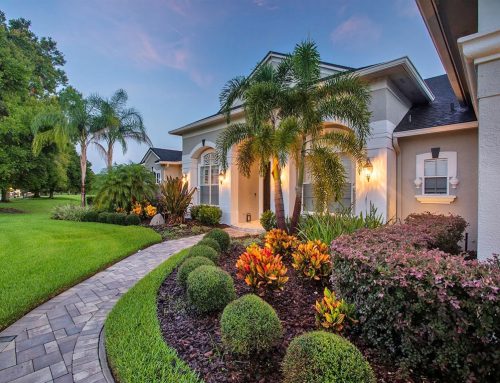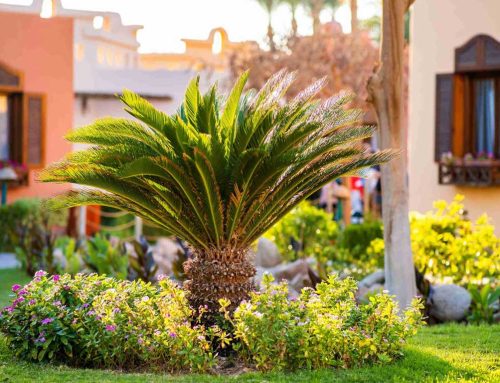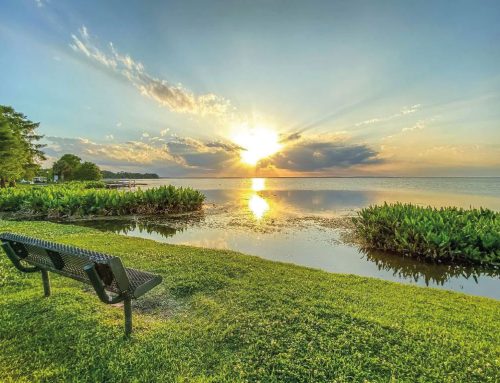Water is essential for life in a landscape. And although Florida has received an abundance of rain lately, our dry summer climate means that what falls from the sky today won’t be enough to sustain the garden tomorrow.
Designing an efficient irrigation system requires careful design, planning and much consideration. Efficient landscape irrigation is essential to maintaining beautiful outdoor spaces and environments. The same principles apply whether you’re managing a lush garden or a sprawling commercial landscape. Using proper irrigation methods can save water, reduce costs, and promote the long-term health and vitality of your plants.
Why is Irrigation Important?
There’s a reason we value irrigation systems so highly for newly installed landscaping. Freshly planted greenery, groundcover, and flowers alike all need stable and consistent watering to establish strong root systems. Once strong growth is established, most plants require less water—but a healthy dose still encourages flourishing growth. However, just making sure you spray the hose around the same time each Saturday isn’t enough to ensure a well-balanced water supply.
There are many factors that can affect how much water your plants need. Your soil’s water retention determines whether it will hold water like a sponge and provide a steady water supply for your plants or if water will run straight through, leaving roots dry almost immediately. Your local season and climate tell you generally whether you can expect snowfall or blazing sun, but day-to-day weather changes everything. You have to take a dry spell, a week of rain, or even a cloudy period which slows water evaporation into account.
What Landscapes Benefit from Irrigation?
Installing a lawn sprinkler system might seem like a no-brainer for anyone who’s devoted to their lush green grass, but there are many more reasons that a well-designed water irrigation system can help you. Irrigation can help groundcover, greenery, trees and shrubs, and garden beds—in any climate.
Even if you have drought resistant or low maintenance landscaping, those plants require water to become well established. Irrigation systems can continue to be a useful part of waterwise yard design and decor long after plants are hardy as well! Having a watering system in place will allow you to use it when needed to support your plants. You don’t have to run it every day, but it’s a good insurance policy to protect your landscape if there’s ever a prolonged dry spell.
Types of Irrigation Systems for Landscaping
There are several different types of irrigation systems that can be used for different needs. You can find the one that’s best for your landscape or combine methods to match different zones of your planting.
Sprinkler Irrigation
Sprinkler installation is the go-to choice anywhere water needs to be spread across a wide area, making it the most popular lawn irrigation system around. Whether you’re trying to cover a wide area of groundcover or you have scattered planting that would be difficult to drip irrigate, installing a sprinkler system can tackle it all. This is the most versatile irrigation system for a wide range of landscaping styles.
Micro Sprinkler Irrigation
Micro sprinkler systems deliver water right to the base of plants using a low pressure system with less spray than a typical sprinkler system. Drip irrigation is actually one form of micro sprinkler irrigation, but the term also includes systems using sprinkler heads with a low and tight spray that help to keep water application localized. This technique is most often used in gardens, greenhouses, and orchards.
Drip irrigation
Drip irrigation is a highly efficient method of delivering water directly to the root zones of plants. It minimizes water loss through evaporation or runoff, making it an excellent choice for landscape irrigation. In addition, you can customize drip systems to suit various plant types and soil conditions. This is key in helping you ensure each area receives the appropriate watering level.
Install Smart Irrigation Controls
Upgrade your irrigation system with smart controllers that utilize weather data and soil moisture sensors to adjust watering schedules automatically. These controllers help you automate irrigation optimization. They limit watering during rainy spells and increase watering during dry periods based on current weather conditions. This type of landscape irrigation allows you to increase irrigation efficiency by significantly reducing your water waste.
Maximize Your Irrigation and Landscaping Design
By following these landscape irrigation best practices, you can maintain a lush and healthy outdoor environment while conserving water and resources. Efficient irrigation is not only effective for reducing water waste. It also lowers water bills, minimizes environmental impact, and promotes the longevity of your landscape investment.
Designing your irrigation system with smart technology and eco-friendly practices will not only maximize your landscape and irrigation design. It also contributes to a more sustainable and environmentally responsible approach to water management. Implementing these best practices will help you achieve beautiful and thriving landscapes while conserving water and your wallet.
A good irrigation plan can also qualify you for water saving landscaping programs in some areas! Make sure to check your local landscape in West Palm Beach or Palm Beach County rebate programs to find out what rebate amounts they offer.







Leave A Comment